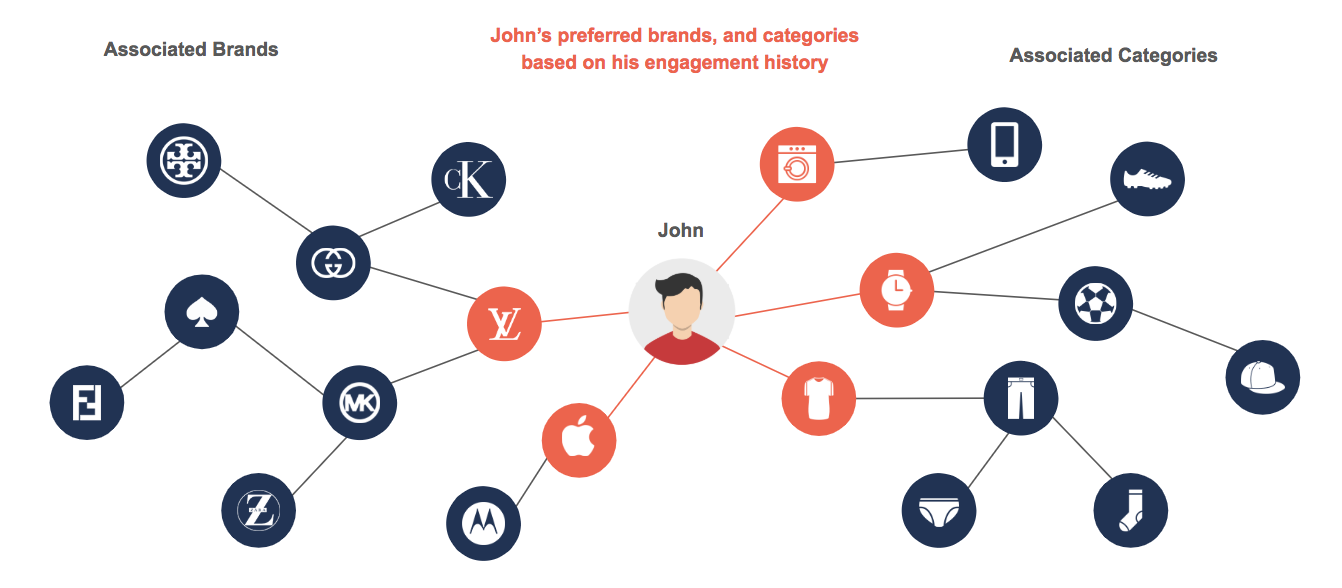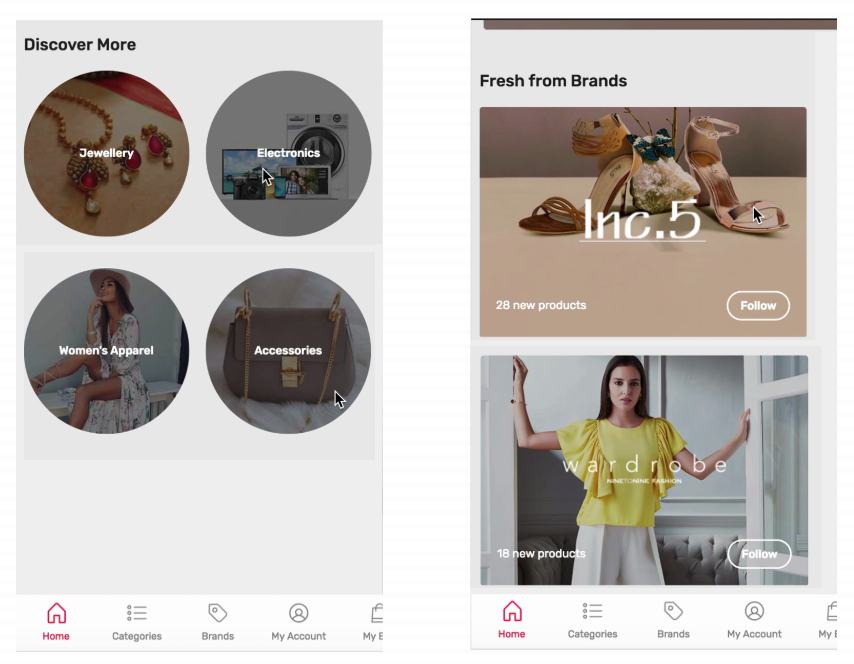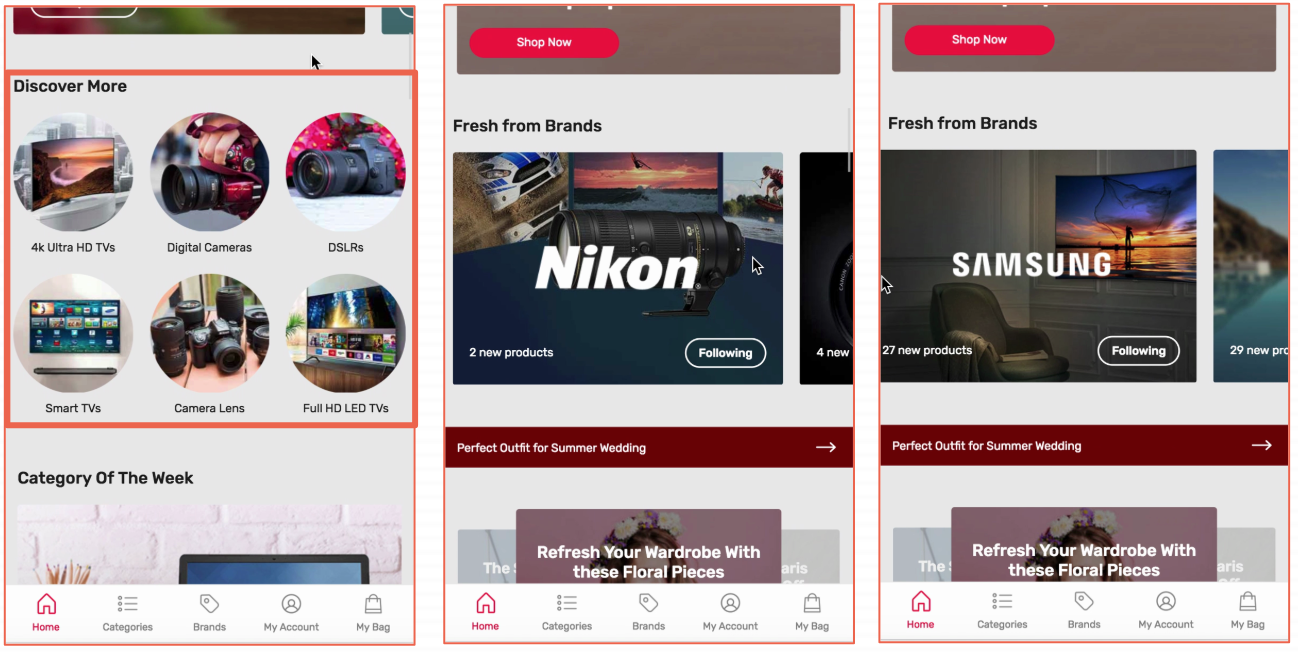Crafting Individualized Customer Experiences: Brand & Category Based eCommerce Personalization6 min read
Table of Contents
The Case For Personalization
E-commerce is crowded. Though the amount of money and time spent by customers on online purchases is rapidly rising, the days of loyalty are long past. This is simply because retailers today are investing in creating a loyal customer base. Customers are moving from retailer to retailer with a knowledge that there will always be a better deal out there.
The case for personalization has been well made.
According to a study conducted by Forrester, 68% of shoppers are unlikely to return to a website or store that doesn’t provide a satisfactory customer experience.
With Forrester advocating the move to 1:1 Personalization, retailers need to start looking at new ways to connect with their customers, keep them engaged, and, eventually, turn them into loyalists.
Brands, Then And Now
In ancient times, livestock was aplenty. While herds were owned by groups of people, there was no way of identifying whose was what. There, of course, was the small matter of theft which was, probably, fairly rampant. What did our learned ancestors do to solve this problem of identity? Simple. They marked these animals with a symbol that would identify them as uniquely theirs. These, essentially, were the earliest brands, and this was probably the first instance of brand building.
Brands, as we know them today, are almost living entities. They are, essentially, how a customer perceives the entity. A brand is more than simply slapping a logo and a tag-line onto a line of products. Branding is a combination of art and science — a continuous exercise that is carried out by corporations over long periods of time in order to create an identity for a line of products. Brands, over time, take on a life of their own, with customers heavily investing in them, and even making multiple purchase decisions based on how they associate themselves with these brands.
Making Shopper Centric Retailing A Reality: Vue.Ai’s Omnichannel Personalization
Most retailers organize their online real estate (web pages, apps, etc.) in a fairly logical fashion. In most cases, this ends up being a hierarchy of categorical information. Why? Well, human beings, at some level, behave according to patterns. Years of conditioning of shopping in physical stores, wherein products are arranged by department, has led to shoppers’ navigational patterns on e-commerce stores following similar patterns.
Thus, when we talk about personalization Engine, and individualization, we need to go beyond simply recommending products to users. Vue.ai’s personalization platform encompasses visual attributes like color, pattern, sleeve length, style, occasion, brands and categories, and combines this with user behavior insights to personalize every touchpoint of the shopper journey to help them discover products they love, instantly. Our Complete the Look module tailors search results, and curates ensembles with personalized complementary recommendations across your website, app, email and more.
Personalizing brands and categories that appear for each user can go a long way in creating customer engagement.
(For a deeper explanation of personalization, read here)
What Is Brand And Category Personalization?
Consider a shopper, John, who has shown a clear preference towards certain categories, and brands through his shopping behavior. The simplest level of personalization would be to show more products from the same brands and categories that John prefers. However, this would limit the discovery of other products and result in something of a self-fulfilling prophecy. Vue.ai’s product recommendation engine go a step further, using intelligence from across the population, in identifying brands that are related to a given brand.
Similar brands are identified based on cues both visual and non-visual. For fashion and lifestyle, visual cues such as the styles and lookbooks are analyzed to identify brands that have similar affinities. For other categories such as electronics, where visual attributes are not the primary purchase factors, non-visual attributes such as price ranges, specifications, fabric and other descriptions are used to find similar brands.

Similarly, based on categories that John has shown affinity towards, other categories – that are closely associated to the given categories, are identified using a combination of visual and non-visual attributes and are recommended for him.
A Live Example In Action
Let’s say John enters a website for the first time. Since there is no prior browsing history, a good place to start would be to show categories and brands that are trending at the start of his journey on the home page.

As John now proceeds to view multiple cameras, he even explicitly follows Canon and Nikon, further giving an explicit signal of affinity towards these camera brands, and cameras as a sub-category within electronics. After this, he moves on to also looking at some Televisions, and follows Samsung as a brand.

With these strong signals that we receive from John’s browsing patterns, Vue.ai understands that the user is now looking at electronics, broadly, and televisions and cameras in specific, at this point in time. Accordingly, the recommendations for brands and categories that are shown to the users are dynamically changed to incorporate this real-time information.

As John heads back to the homepage, The Discover More, which is the category-recommendation engine now shows Cameras, Smart TVs, DSLRs etc. as recommended categories. Not only cameras, Camera Lens is also a category that has been identified as being complementary to Cameras and now is suggested.
Similarly, since John has explicitly followed Nikon and Samsung, at this point, there are multiple new products in these two brands and hence, these are also shown to him in the Fresh from Brands section.
Use Cases Of Brand And Category Personalization
By personalizing the homepage with relevant recommendations each time the user comes back to the site, retailers are able to improve engagement, while building loyalty and trust. Understanding brand and category affinities of users and using this intelligence to personalizing the user experience can be implemented in multiple ways. Below are a few use cases:

To stand out from every other e-commerce website there is, retailers need to understand their users, and personalize experiences for them. Gleaning their affinities towards brands and categories, and using these, as well as all the other information that is available is a key to curating these experiences. Vue.ai’s AI-based engines do just this, combining explicit user actions (like following brands) with implicit signals like viewing offers, products, banners pertaining to certain brands and categories to recommend products, brands, categories, and more to create individualized experiences for each customer that, ultimately, leads to a more engaged customer, and a higher overall Customer Lifetime Value.



